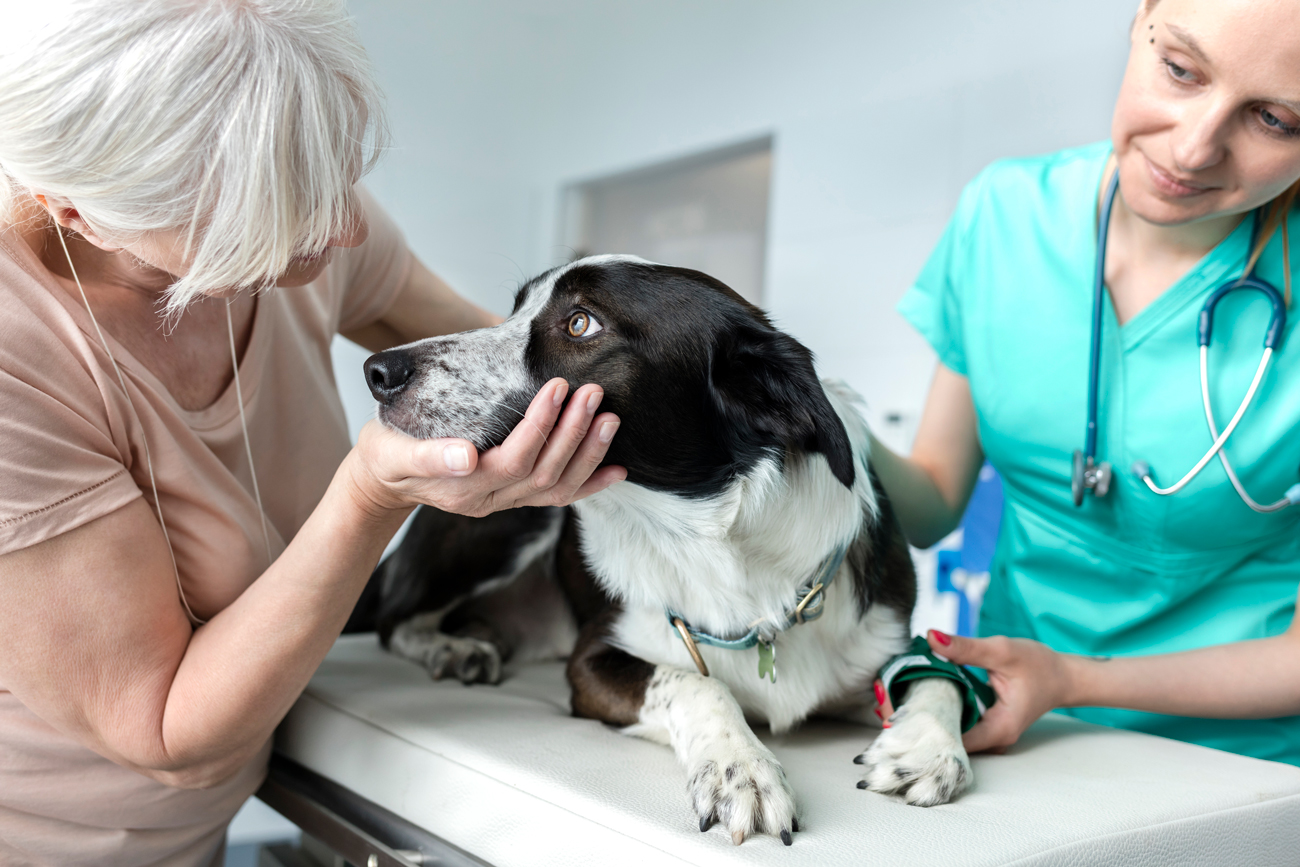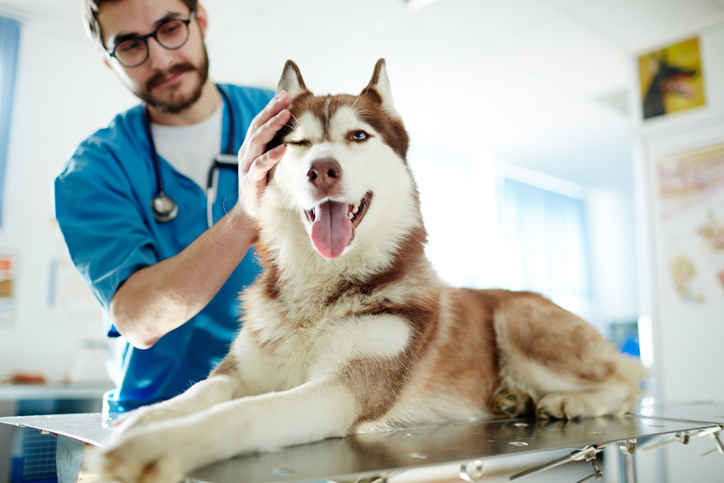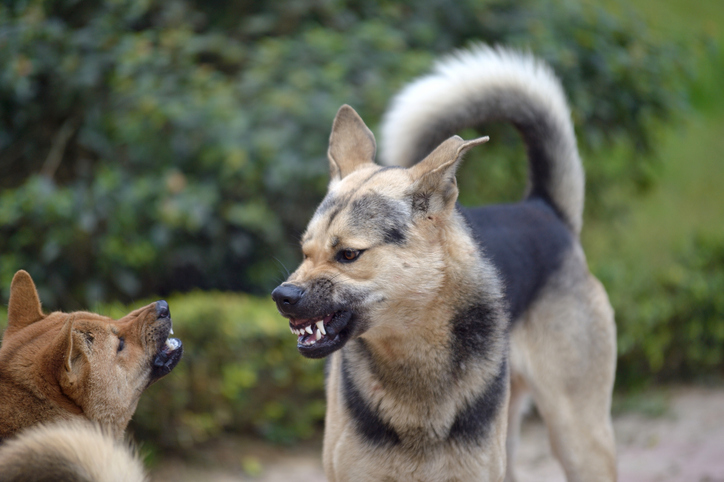
Skin lumps on older dogs
9th July, 2021
Discovering a lump on your older dog’s skin can be worrying for all concerned. But it’s important not to jump to conclusions before they’ve been seen by a professional.
As dogs age, skin lumps become more common, but most are benign (non-cancerous) and easily treatable. However, some can be malignant (cancerous). To increase the chances of a successful outcome it’s important such lumps are detected and treated straight away.
To get to know the various lumps and bumps you might find on your senior canine’s skin, we’ve written this handy guide. It’ll show you how to check for lumps, explain when you need to seek further help and talk about some of the most common types of lumps and their treatment.
If you need further assistance, policyholders who have older dog insurance through Petwise will be able to call the 24-Hour Vet Helpline for advice. It’s a quick and easy way to put your mind at rest.
How to check and monitor skin lumps
Whether during grooming or just sitting together on the sofa, it’s important to regularly check your dog for skin lumps. Taking a few minutes now could help you avoid many hours of worry in the future.
For short-haired dog breeds you might be able to just look for lumps. However, for those with thicker hair you might need to use your sense of touch as well.
If you do find a lump or swelling, don’t panic. Simply take a photo, make a note of how big it is (a comparison to the size of a coin is simple but very effective) and give your vet a call.
No lump is too small to be checked, even if your dog already has lots of other lumps already. After all, no two lumps are the same and while one could be benign, another may not be.
It can also be helpful to make notes such as:
- Where is it situated?
- Is it under the skin or does it hang off the skin?
- What shape is it? Regular or irregular?
- What does it feel like? Does it have a smooth or lumpy texture? Is it hard or soft to the touch?
- Does it move around or does it feel attached to deeper structures?
- Has the hair over the top of the lump been lost?
- Is it painful, red or hot? Has it become ulcerated?
- Does it bleed or is there a discharge from it?
You might decide to take photographs and measure it every couple of weeks – this is a great way to keep an eye out for any changes. Because if the lump does change then you’ll need to book a check-up appointment as soon as possible.

How your vet can help
At the appointment your vet will take a look and may be able to tell you immediately what’s causing the lump and whether it’s something to be concerned about or not. If they’re not certain then they’ll probably conduct tests to determine the type of lump it is and the treatment required.
When deciding on which tests, your vet will consider many matters. These include the location of the lump, and whether sedation will be needed.
Fine needle aspiration (FNA)
This diagnostic technique is minimally invasive, often doesn’t require sedation, and is relatively inexpensive. To do the test a little needle is inserted into the lump to suck out cells which are then put onto a microscopic slide. The vet may assess this sample in-house or might send it to an external specialist for a laboratory examination.
Impression smear
If there’s a discharge from the lump, the FNA might not be needed and your vet may simply deposit some of the discharge onto the slide. This will then be examined in the same way as with an FNA.
Biopsy
If the results of the FNA are inconclusive then your vet might advise that a biopsy of the lump is performed. This procedure is more invasive and usually involves a sedative or anaesthetic. A small part of the lump or even the entire lump will be removed and sent to a lab for further examination.
Lab test
If the lump contains fluid, the fluid could also be sent to a lab to culture and check for the presence of organisms such as bacteria or fungi.

A quick guide to common types of skin lumps on older dogs
There are many possible causes of skin lumps on older dogs, and while there are certain signs that might give you an idea of what’s causing them, it’s never wise to diagnose them yourself.
Your vet will always have a better idea of diagnosis and in particular the most appropriate treatment.
Here are just some of the most common types of skin lumps and their possible treatments.
Benign (non-cancerous) lumps
The first group of lumps worth considering are so-called benign lumps. They are called this because they lack the ability to invade other tissues and spread to other areas of the body.
These are usually nothing to worry unduly about. Although if they get large then they can cause problems. For example, they might restrict movement or otherwise irritate your pet.
If you’re worried about how you would care for your beloved old-timer if they became ill then give our friendly UK-based team a call. They’ll take you through all you need to know when it comes to pet insurance for older dogs.
Lipomas (fatty lumps)
Lipomas or fatty lumps are perhaps the most common in middle-aged and older dogs. These harmless lumps tend to be soft, rounded and made up of fat cells. They grow very slowly, have no impact on overall health, and rarely spread. However, they can grow very big and overweight dogs are more susceptible to them.
While no breed is immune to lumps, the Blue Cross says they’re more prevalent in labs, sheepdogs, dachshunds, cocker spaniels, weimaraners, miniature schnauzers and Doberman pinschers, so if you have one of these canines, make sure you check them regularly.
If lumps become very big or get in the way of movement then your vet might remove them. In extremely rare cases, lipomas can develop into a malignant tumour called a liposarcoma. The Blue Cross animal charity has more information on lipomas.
Abscesses
Abscesses are painful swellings containing pus caused by an infection. They will generally need to be drained and flushed with a clean antibacterial solution. Antibiotics are sometimes prescribed.
Hives (urticaria)
A rash of round, red bumps on the skin that itches. Usually due to an allergic reaction, they might need treatment with steroids or antihistamines if they don’t disappear on their own.
Skin tags
These are harmless, fibrous growths extending from the skin’s surface by a stalk. Dogs may develop a single tag or many of them. Common locations include chest, legs, back, armpits or other areas.
Sebaceous cysts
A blocked sebaceous gland can soon lead to a sebaceous cyst forming. These are usually harmless but might require treatment if they become red and sore.
Perianal adenomas
A common, slow-growing and non-painful tumour that can be found growing around the anus, mostly in unneutered older dogs.
If they become ulcerated or irritate your dog then they may be removed. Because this is a common area for malignant tumours, any lump should be properly assessed by a professional.
Warts (papillomas)
With a cauliflower appearance similar to the warts people get, papillomas can be found growing alone or in groups.
Caused by a virus, warts are harmless but highly contagious through social contact between dogs. No treatment is usually necessary. But they can be easily removed if they irritate your dog.
Haematomas (blood blister)
Following a minor injury, bite or scratch you might notice some swelling under the skin. These blood-filled lumps can be painful but often get better on their own.
However, be aware there could be an underlying cause which needs treatment. For example, an infection or parasite infestation. Your vet might recommend draining or surgically removing the blister.

Parasites and stings
Dogs can easily pick up parasites, such as ticks, when out walking that might cause a lump. Ticks should be removed using a special ‘tick hook’.
If you try to pull off the tick without this tool, part of the tick may become detached and burrow further into the skin, causing further pain and complications.
The PDSA advises it’s worth being aware of the signs of illnesses carried by ticks in case your dog picked up something nasty from their uninvited guest.
Bee and wasp stings can also cause lumps on your old dog’s skin. While these aren’t normally dangerous, take extra care if:
- Your dog has been stung on the face (particularly if they’re a flat faced breed.
- Your dog has been stung a lot of times.
- Your pet is allergic to stings.
Whatever happens, if your dog is having difficulty breathing and you think they’ve been stung, ring for help immediately.
When an emergency happens you’ll be glad you invested in pet insurance for older dogs. After all, you need to be able to focus on your trusty four-legged friend rather than whether you can afford to pay the bill.
Malignant (cancerous) lumps
If left untreated a malignant lump can quickly spread through the body and affect multiple organs. This can be via local growth (destroying nearby tissue) or by metastasis, where tumour cells enter the bloodstream or lymphatic system to spread to other body areas.
They can cause devastating effects on your older dog’s health. As well as removal of the affected tissues, chemotherapy and radiation therapy are also often used to prevent further spread.
Mast cell tumours (MCTs)
One of the most common skin tumours, particularly affecting dogs older than eight years of age.
A great difficulty with MCTs is the fact they can look like many less harmful tumours. Some appear as small, freely movable lumps while others appear as large, ulcerated and hairless. This is why it’s so important to get any new lump checked out immediately by a trained professional.
When diagnosed, your vet will also check if the tumour has spread. Some breeds are more susceptible to MCTs. These include boxers, Boston terriers, Labrador retrievers, beagles and schnauzers.
Soft tissue sarcomas (Fibrosarcomas)
Commonly found in older, larger breeds of dog, these very invasive tumours are known for their fast growth.
They usually appear very much like a lipoma and thus can be easily mistaken for a harmless lump. Similar to a lipoma they are a firm or semi-firm lump under the skin that are often not painful and may have normal skin over them.
A biopsy is required for accurate diagnosis. They can be very difficult to remove.
Melanomas
While melanomas in dogs tend to be a lot less malignant than those in humans, they are still very important to be aware of. Malignant melanomas tend to occur in the mouth or other non-haired regions, such as the lips, vulva and anal area. They have to be removed but they can recur.
Squamous cell carcinomas
Squamous cell carcinomas are skin cell tumours particularly found on unpigmented or hairless areas. These tumours can be found in areas such as the eyelids, vulva, lips, nose or nail beds.
Often noticeable by their raised, crusty and sore surface, they can be relatively slow growing. Again, they should be removed to prevent further spread.
Petwise - specialists in pet insurance for older dogs
As your dog gets older, it’s not just lumps and bumps that might increase, but also other health needs. That’s why there’s no upper age limit for taking out insurance cover with us. Every dog deserves the very best protection available.
We can offer a choice of seven cover levels for pet insurance for older dogs to suit mosts budgets and requirements. Dental cover is also included on all policies.
If you need to make a claim, our caring team is always ready to help.
Finding pet insurance for older dogs is straightforward with Petwise – get a quote today.
Policy benefits, features and discounts offered may very between insurance schemes or cover selected and are subject to underwriting criteria. Information contained within this article is accurate at the time of publishing but may be subject to change.